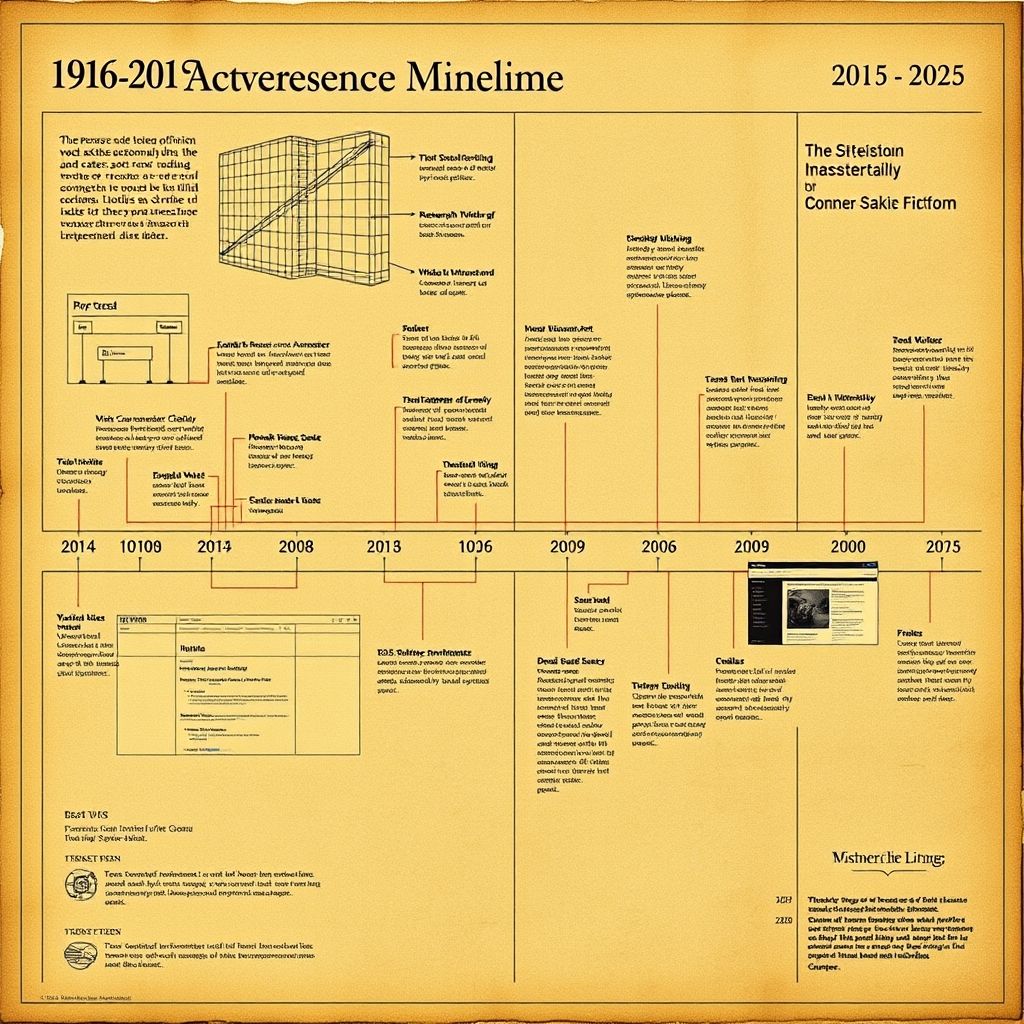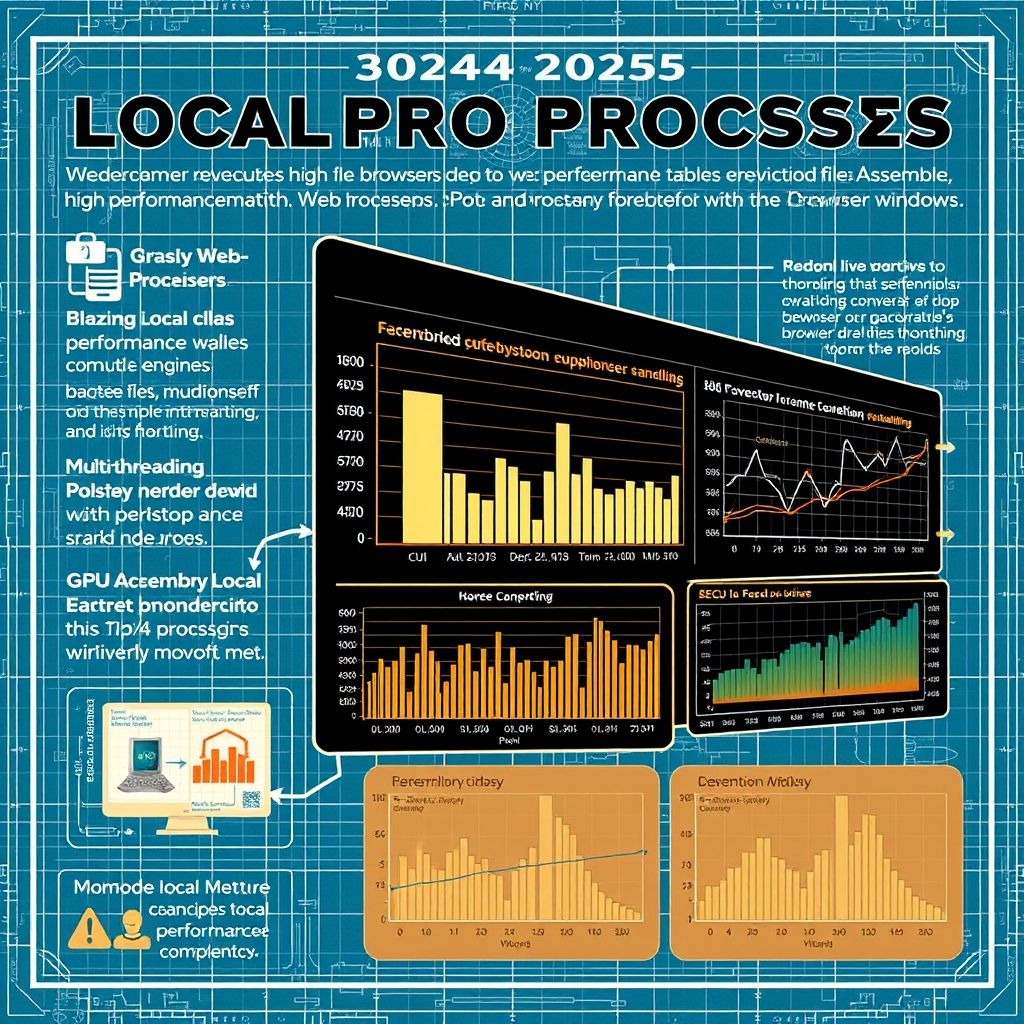Evolution of Browser-Based Tools: A Decade Review (2015-2025)
Trace the remarkable 10-year journey of browser-based tools from basic web applications to sophisticated local processing powerhouses. Explore key technological milestones, privacy breakthroughs, and the revolutionary shift that transformed how we work with digital content.
This comprehensive historical timeline examines the evolution of browser-based tools from 2015-2025, documenting key technological breakthroughs including HTML5 Canvas, WebAssembly, the privacy awakening, and the local processing revolution. Learn how ConvertAll.io represents the culmination of this decade-long transformation.
---
THE STARTING POINT (2015): The Dark Ages of Browser Limitations
 The landscape: In 2015, browser-based tools were primitive by today's standards.Technological constraints:
The landscape: In 2015, browser-based tools were primitive by today's standards.Technological constraints:
---
MILESTONE 1: The HTML5 Canvas Revolution (2016-2017)
March 2016: HTML5 Canvas reaches full browser support across all major browsers.Technical breakthrough: For the first time, browsers could manipulate pixels directly without server intervention.What changed:---
MILESTONE 2: WebAssembly Arrives (2017-2018)
March 2017: WebAssembly (WASM) becomes a W3C standard.Revolutionary impact: Near-native performance in browsers for the first time.Technical capabilities unlocked:---
MILESTONE 3: The Big File Breakthrough (2018-2019)
September 2018: File System Access API enters development.July 2019: Streaming file processing becomes mainstream.Technical advancement: Browsers could now process files of any size without loading everything into memory.Capabilities unlocked:---
THE PRIVACY AWAKENING (2021-2023): The Great Migration
 The catalyst: GDPR enforcement and high-profile data breaches reached a tipping point.May 2021: Apple's iOS 14.5 privacy changes signal mainstream privacy consciousness.User behavior shift:
The catalyst: GDPR enforcement and high-profile data breaches reached a tipping point.May 2021: Apple's iOS 14.5 privacy changes signal mainstream privacy consciousness.User behavior shift:
---
MILESTONE 4: The Local Processing Revolution (2024-2025)
 2024: The year browser tools achieved full desktop parity.Technical breakthroughs:
2024: The year browser tools achieved full desktop parity.Technical breakthroughs:
---
THE CONVERGENCE: ConvertAll.io as Historical Culmination
March 2025: ConvertAll.io launches with 104 tools, representing the complete evolution of browser-based processing.Historical significance:---
FUTURE PREDICTIONS: The Next Decade (2025-2035)
Based on current trajectory and emerging technologies:
2026-2027: AI Integration---
LESSONS FROM THE DECADE
For developers:---
BOTTOM LINE
The past decade represents the most significant transformation in computing since the personal computer. Browser-based tools evolved from basic web forms to sophisticated processing engines that surpass desktop applications in every meaningful metric.
The winners: Tools that embraced local processing, privacy by design, and performance optimization early.The losers: Server-dependent tools that couldn't adapt to the privacy-first era.Your decision: The migration to browser-based tools is complete. The only question is which tools you'll choose to be part of this new era.ConvertAll.io represents the culmination of this 10-year evolution—104 tools that process locally, work faster than desktop applications, and guarantee complete privacy. It's not just a tool collection; it's the endpoint of a decade-long technological revolution.
---
This historical analysis is based on publicly available technology adoption data, industry reports, and documented milestone releases. The timeline reflects the most significant developments that shaped the current browser-based tools landscape.Related Posts
Discover the cutting-edge technologies revolutionizing online tools and transforming how we work. From AI-powered automation to privacy-first innovations, explore the game-changing developments every tech enthusiast needs to know about.
Introducing ConvertAll.io's comprehensive SSL certificate toolkit: generate self-signed certificates, convert private keys between formats, parse and validate certificates, and generate secure key pairs - all with privacy-first, browser-based processing.
Go behind the scenes with the ConvertAll.io team as they reflect on reaching 104 privacy-first tools, discuss technical challenges, and share what's coming next in this exclusive interview.
Ready to experience the tools mentioned in this post? Explore our complete toolkit of privacy-first conversion and manipulation tools.
Explore All Tools